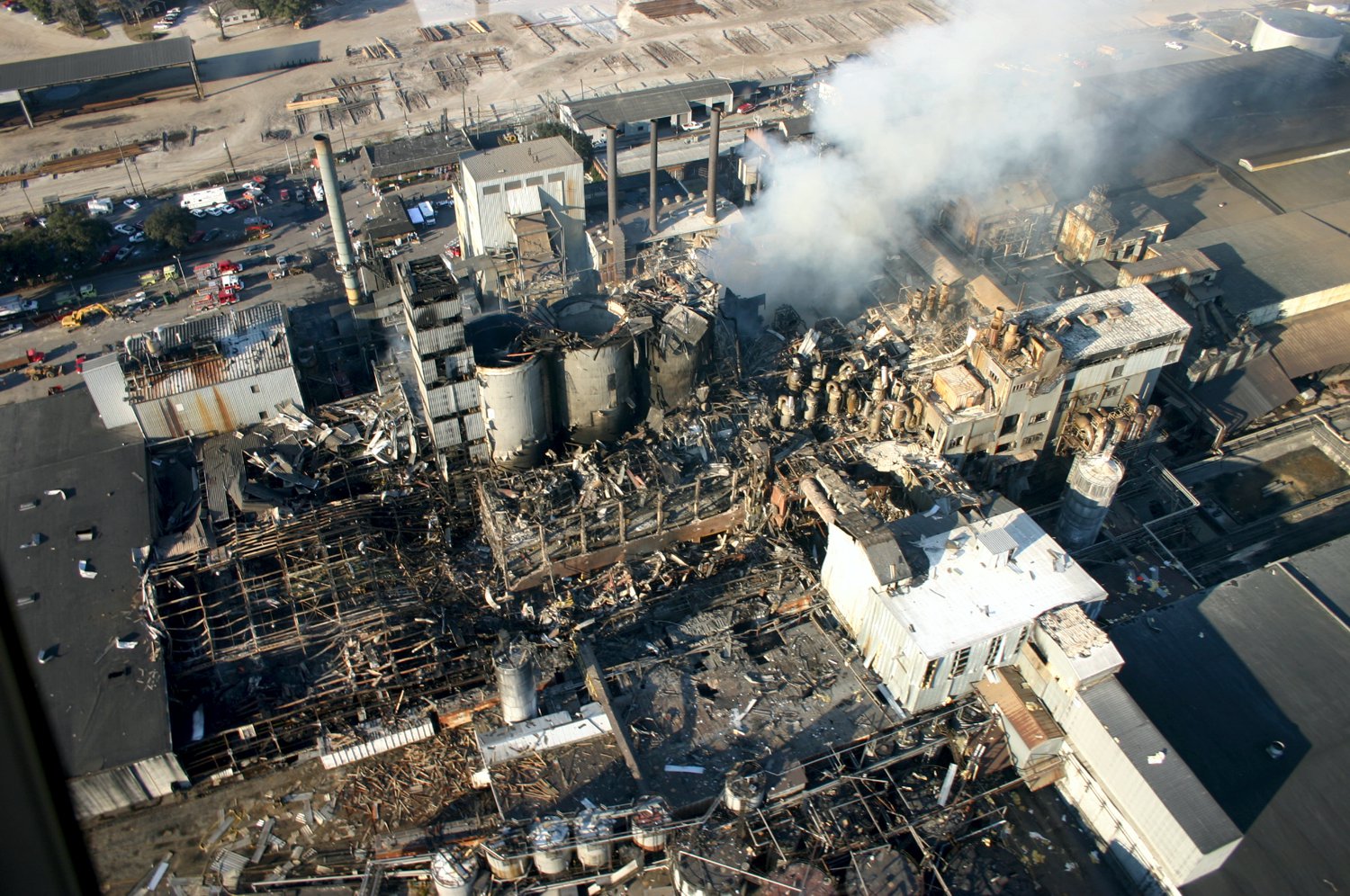
Dust explosions in Process Industries can have devastating effects. Where combustible dust has been allowed to accumulate within a workplace a shockwave from a primary explosion in a process vessel can rouse the accumulated dust, which can then be ignited by flame released by the primary explosion; resulting in a much more serious secondary explosion within the building. The potential for widespread consequences is evidenced by the incidents at Blaye in France in 1997, and Georgia USA in 2008; dust explosions clearly represent potential threat to people as well as risk of damage to assets.
It is essential for the Health and Safety of personnel at installations where powders / dusts capable of forming explosive atmospheres are stored and processed that potential dust explosion hazards are rigorously identified and thoroughly understood.
There are legal requirements under DSEAR (in the UK) and the Atex 137 Directive (in the EU) requiring that suitable and sufficient risk assessments are undertaken to ensure that the risk to personnel from the hazards of explosive atmospheres (including dust explosions) is as low as reasonably practicable. READ MORE
Conduct of an effective risk assessment requires an in-depth understanding of the conditions under which dust explosions may arise, and an appreciation of the potential consequences of these events. In particular the risk assessment needs to identify the hazard scenarios that may result in harm to people, and ensure that suitable control measures are implemented into the plant design to minimize the risk from these hazards.

Having identified those hazards with the potential to cause harm the assessment should follow a hierarchical approach in respect of prevention and protection e.g. :
“Minimisation” may involve the use of “inerting” (i.e. displacement of oxygen by use of inert gas) however this approach may introduce additional hazards of asphyxiation and, where dust explosions are concerned, is only likely to be viable for small scale operations. Where inerting is employed it is usually critical to continuously monitor the oxygen concentration in the vessels concerned so as to ensure that safe operation is being continuously maintained.

Our consultants have in depth knowledge of explosion phenomena for explosion hazards involving combustible dusts. They can provide expert analysis of potential hazards to provide a detailed understanding of how the hazards may arise, the potential consequences (e.g. in terms of overpressure, flame / heat, and projectiles) and expert guidance on appropriate prevention and protection measures.
Our assessments follow a systematic approach involving :

The consideration of the process to understand how, where and why flammable atmospheres involving combustible dusts may occur would follow the guidance from BS EN IEC 60079 relating to Area Classification, thereby fulfilling the requirements of DSEAR or Atex Directive 137 (as appropriate) for preparation of a Hazardous Area Classification study for the operations. READ MORE
As a deliverable from the assessment our consultant will provide a functional specification for equipment and protective systems required to implement the Basis of Safety. In relation to this our consultants are able to provide independent / impartial advice given that Phoenix does not supply hardware, and does not act as an agent for any equipment supplier.
A fundamental requirement at the start of any assessment is an understanding of the flammability of the materials concerned. Flammability data for combustible dusts depend on the physical characteristics of the material as well as the chemical composition. Specifically the particle size distribution and moisture content of a combustible dust will influence its flammability. Typically the larger the particle size, and the higher the moisture content the less severe will be the rate of pressure rise in an explosion involving the material, and a larger spark energy will be required to ignite a flammable cloud.
Collation of flammability data for dusts (through testing) can be expensive and time consuming. However, for the implementation of a Basis of Safety for a given operation it is not the case that it is necessary to obtain data for all flammability characteristics of the dust concerned. By adopting a logical and systematic way in the risk assessment the collation of dust flammability data can be targeted to those required for the design of equipment to implement the Basis of Safety. This can reduce costs of testing.
For a specific Basis of Safety for a given operation involving processing of combustible dust our consultants will advise on what data are essential so as to optimise the overall assessment.
Our overall aim is to provide practical, pragmatic advice to ensure acceptable levels of explosion safety with protection commensurate to the risk.